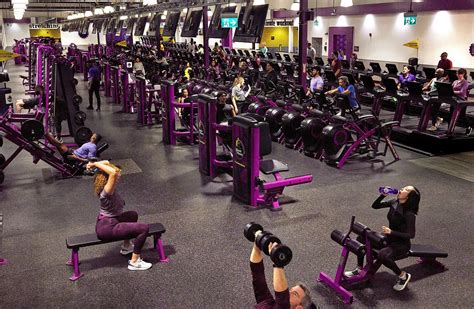Best deload strategy to smash strength plateaus & optimize recovery?

In the relentless pursuit of strength and muscle gains, many lifters push their bodies to the absolute limit. While dedication is key, neglecting strategic rest can lead to stagnation, injury, and burnout. This is where the concept of a “deload” becomes not just beneficial, but essential. A deload is a planned, temporary reduction in training stress designed to allow your body to recover, adapt, and ultimately prepare for new personal bests.
Why Deloading Is Crucial for Long-Term Progress
Imagine building a skyscraper without pausing to let the concrete cure. Eventually, the structure would crumble. Your body is similar. Intense training creates micro-tears in muscles, stresses the central nervous system (CNS), and depletes energy stores. Without adequate recovery, these stressors accumulate, leading to:
- Prevention of Overtraining: Deloads offer a necessary break, preventing the physical and mental exhaustion associated with overtraining syndrome.
- Optimized Recovery: They allow muscle tissue to repair, joints to heal, and the CNS to recuperate fully. This is when true strength adaptations occur.
- Breaking Through Plateaus: Often, strength plateaus aren’t due to a lack of effort but rather a lack of recovery. A deload can prime your body to come back stronger and smash through previous limits.
- Injury Prevention: By reducing accumulated stress, deloads significantly lower the risk of overuse injuries.

Recognizing the Signs You Need a Deload
While some lifters schedule deloads proactively, others wait until their body forces them to. Being aware of the signs can help you deload before performance severely suffers:
- Persistent Fatigue: Feeling constantly tired, even after a full night’s sleep.
- Stagnating or Decreasing Strength: Your lifts aren’t improving, or you’re struggling with weights that were once easy.
- Aches and Pains: Chronic joint pain, muscle soreness that doesn’t subside, or new, unusual discomforts.
- Poor Sleep Quality: Difficulty falling asleep, staying asleep, or waking up feeling unrefreshed.
- Irritability and Low Mood: The CNS can become overtaxed, affecting mental well-being.
- Loss of Motivation: Training feels like a chore, and you lack enthusiasm for your workouts.

Common Deload Strategies to Consider
There isn’t a one-size-fits-all approach to deloading. The best strategy depends on your training history, current fatigue levels, and personal preference:
- Full Rest (Complete Break): Taking 3-7 days completely off from the gym. This is often best for severe fatigue or when nearing burnout.
- Reduced Volume and/or Intensity: This is the most popular method. You continue to train, but significantly reduce the weight (e.g., 50-70% of your usual working weight), the number of sets, and/or the number of reps. The goal is to stimulate without stressing.
- Active Recovery: Engaging in light, non-strenuous activities like walking, hiking, swimming, yoga, or stretching. This promotes blood flow and recovery without adding significant stress.
- Changing Exercises: Temporarily switching to less demanding variations of your main lifts (e.g., sumo deadlifts instead of conventional, or dumbbell presses instead of barbell bench press) or focusing on accessory work.
Crafting Your Optimal Deload Strategy
The “best” deload often combines elements of the above, tailored to your individual needs. For most intermediate to advanced lifters, a reduction in volume and intensity is highly effective. Here’s a general guideline:
- When to Deload: Typically every 4-8 weeks of intense training, or immediately when you notice the signs of accumulated fatigue.
- Duration: One week is usually sufficient. Some may opt for shorter (3-5 days) or slightly longer (10 days) periods depending on their needs.
- Weight: Use 50-70% of your usual working weight. The focus should be on perfect form, movement quality, and muscle activation, not pushing heavy.
- Sets and Reps: Reduce your usual sets and reps by 50-70%. For example, if you normally do 3 sets of 5 reps, you might do 1-2 sets of 3-5 reps.
- Focus: Use this time for active recovery, mobility work, and addressing any muscular imbalances.

Implementing Your Deload for Maximum Benefit
Don’t view a deload as a step backward; see it as a slingshot. It’s an integral part of periodization that allows for sustained progress. Plan it into your training cycle. During your deload week, resist the urge to “test” yourself or push harder. The purpose is to reduce stress, not add more. Focus on good nutrition, adequate sleep, and hydration – these are crucial for recovery.

Post-Deload: Smashing Plateaus and Reaching New Heights
The magic happens after the deload. You should return to the gym feeling refreshed, re-energized, and often stronger. Many lifters find that they hit new personal records in the weeks following a properly executed deload. This is because your body has had the opportunity to fully recover, supercompensate, and adapt to the previous training stress.
Approach your first post-deload workout with confidence but also caution. Don’t jump straight back to your heaviest weights; instead, gradually ramp up over a session or two to confirm your renewed strength. Then, resume your progressive overload strategy with renewed vigor.

Conclusion
Deloads are not a sign of weakness; they are a sign of smart training. By strategically reducing training stress, you allow your body and mind to recover, adapt, and grow stronger. Incorporating a well-planned deload strategy into your routine is the best way to prevent overtraining, optimize recovery, smash through strength plateaus, and ensure a long, healthy, and progressive lifting journey.








